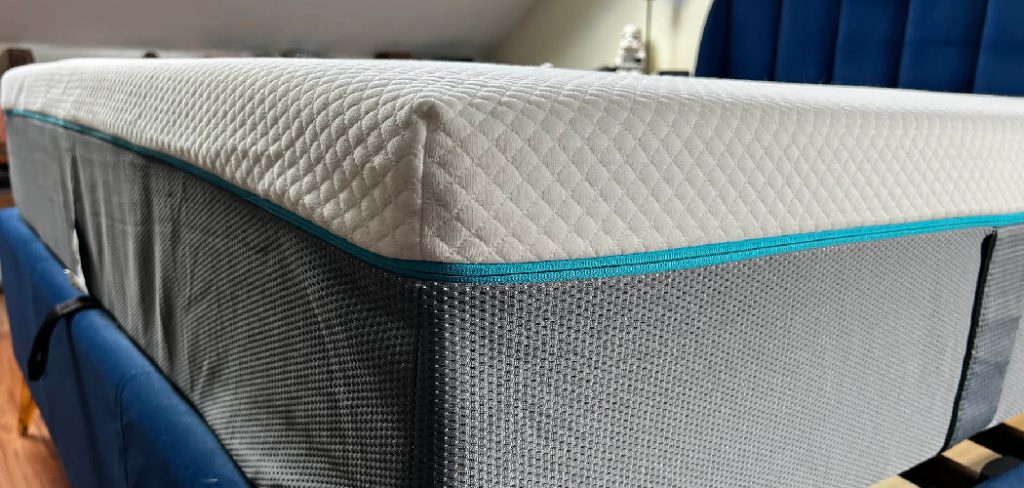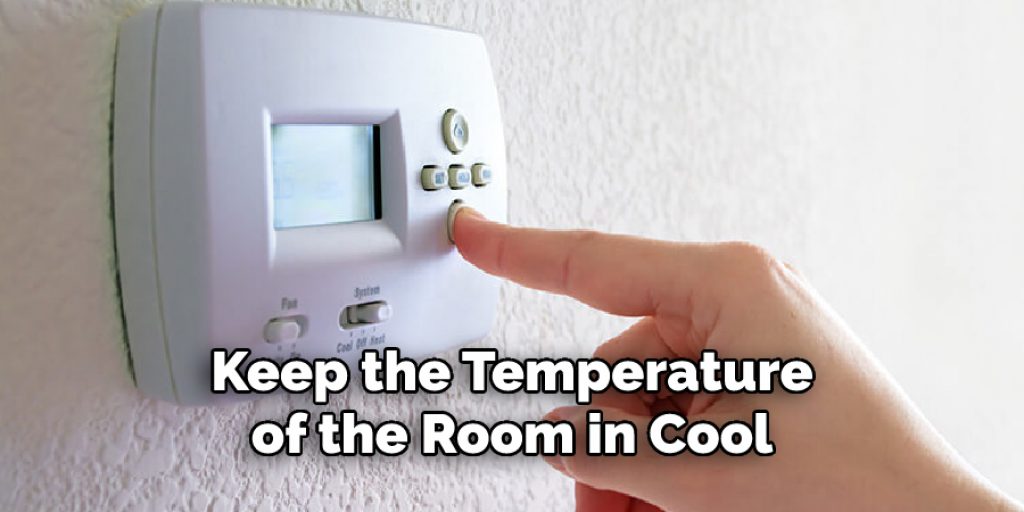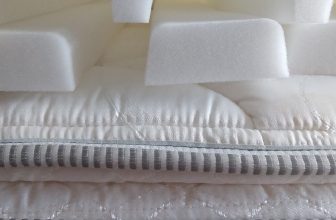How to Prevent Moisture Under Mattress
Do you ever find yourself waking up with sweat-drenched sheets and a damp mattress underneath? This is often caused by moisture buildup under your mattress, which isn’t just uncomfortable – it can also breed bacteria and dust mites. But don’t worry – plenty of steps can be taken to prevent this unpleasant situation from occurring in the first place!

In this blog post, we’ll explore easy-to-follow methods on how to prevent moisture under mattress and ensure optimal comfort for a good night’s sleep. Read on to learn more about preventing moisture buildup beneath mattresses!
10 Best Ways on How to Prevent Moisture Under Mattress
1. Invest in a Breathable Mattress Topper
A breathable mattress topper or protector can help keep your mattress clean and dry and provide extra comfort. Look for mattresses with a Tencel or Coolmax cover designed to wick away moisture quickly. A breathable mattress topper can also help reduce heat buildup, which further reduces the likelihood of moisture accumulation.
2. Use a Mattress Protector
A mattress protector is an additional layer that goes on top of your mattress and helps keep it free from dust mites, stains, and other allergens. Choosing one made from waterproof materials can also usher away moisture is important. A mattress protector will help you to keep your mattress safe from any moisture and other allergens.
3. Use a Dehumidifier
A dehumidifier is an electronic device designed to help reduce humidity levels in the air and can be particularly helpful in areas with high humidity or prone to condensation. Dehumidifiers work by sucking up moisture from the air, which means that they can also help reduce moisture accumulation beneath your mattress.
4. Use Fans to Increase Airflow
Air circulation is key when it comes to preventing moisture buildup beneath your mattress. Placing fans around the bedroom or keeping the door open during the night can help increase airflow and reduce any accumulation of dampness under your
5. Keep the Room Temperature Cool
If you’re in a hot environment, your body is going to perspire and sweat more than usual. Try to keep the temperature of the room cool (around 65-70 degrees Fahrenheit) so that your body doesn’t overheat while you sleep and cause moisture to accumulate.

6. Choose the Right Bed Sheets
Choose bed sheets made from natural fibers like cotton or linen, which are highly breathable and can help wick away any excess moisture from your body. Avoid synthetic materials such as polyester, which retain more heat and create a favorable environment for bacteria growth. Use bed sheets that have a thread count of at least 300.
7. Use a Mattress Pad
A mattress pad can add an extra layer of protection for your mattress and help keep moisture away from the surface. Look for cotton, wool, or other breathable materials that will help quickly absorb any sweat or moisture and keep it away from your bedding. The mattress pad is one of the best ways to prevent moisture under the mattress.
8. Take a Warm Shower Before Bed:
Taking a warm shower or bath before bed can help reduce the amount of sweat and moisture that comes from your body while you sleep, as it cools down your skin temperature and prevents any buildup beneath your mattress.
9. Avoid Eating and Drinking in Bed
Food and drinks can easily spill onto your mattress, creating a hospitable environment for bacteria growth. Avoid eating and drinking on the bed to prevent any moisture from seeping into your mattress. If you eat and drink on your bed often, cleaning your mattress regularly is important.
10. Clean Your Mattress Regularly
It is important to clean and vacuum your mattress regularly to keep the surface free from any dust or bacteria that can cause moisture buildup. Use a non-toxic cleaner meant for mattresses, and use gentle strokes when vacuuming so as not to damage the material on your mattress.
Regularly clean and vacuum your mattress to help reduce any accumulation of moisture, dust mites, or bacteria.
Following these steps will help ensure that you prevent moisture buildup beneath your mattress and keep it in good condition for a long time. Investing in the right products and properly caring for your mattress can help guarantee a comfortable and healthy sleep environment.

Some More Useful Tips for Preventing M Oisture Under Mattress
- Use a mattress protector of breathable material to keep the moisture away from your mattress. A waterproof mattress protector can also be used, but it shouldn’t trap heat and sweat into your mattress as this will encourage mold and mildew growth.
- Cover the slats of your bed with an impermeable material, such as plastic, if you have a wooden bed frame. This will stop any moisture from seeping in from the floor and forming condensation under your mattress.
- Place a dehumidifier in your bedroom to reduce humidity and dry the air. This can help reduce condensation on windows and other surfaces around the bedroom and reduce moisture under the mattress.
- Open a window to increase airflow and ventilation in your bedroom, allowing humid air to escape and be replaced with fresh, dry air from outside. This can help reduce condensation and stop moisture from forming under the mattress.
- Check any water pipes or appliances that are near your bed since they can be sources of moisture in the bedroom. If you identify any leaks or other issues that could be increasing humidity levels in your room, take steps to repair them before excess moisture forms and goes under the mattress.
- Look for signs of mold growth on your mattress periodically, as this can indicate that there is too much moisture under your mattress. If you find any, address the issue immediately to prevent further damage or growth of mold or mildew.

By following these tips and taking proactive steps to prevent humidity buildup in your bedroom, you can ensure that your mattress stays dry and free from excess moisture. This will help keep it in good condition for longer and give you a more comfortable sleeping experience.
Things You Should Avoid for Preventing Moisture Under Mattress
- Avoid using a flat sheet between your mattress and the box spring; this can trap moisture.
- Do not place large items such as luggage on top of your mattress, as these items can trap moisture under them, too.
- Don’t put any plastic or rubber materials directly onto your mattress; plastic traps humidity, while rubber can cause the mattress to become damp.
- Do not allow any liquids to come into contacts with your mattress, such as spilled drinks or sweat; these will make it more likely for moisture to get trapped underneath.
- Don’t keep your mattress in a humid place, as this will encourage condensation and mold growth beneath the fabric surface.
- Don’t store your mattress in a storage unit that is not climate controlled, as this is likely to cause moisture issues due to the humidity of the environment.
- Do not leave your mattress in direct sunlight; this could also increase the chances of condensation and mold formation underneath it.
- Avoid using any type of mattress cover that does not allow for adequate breathability; these kinds of covers often trap moisture around the surface.
- Do not make your bed without allowing enough time for it to dry first; this can cause moisture to accumulate under the mattress.
- Don’t sleep directly on the floor, as this could make it easier for moisture to accumulate underneath your mattress.
- Ensure the area around your bed is well-ventilated; this will help prevent condensation and mold growth beneath the mattress.
- Lastly, be sure to inspect your mattress regularly for signs of moisture damage and take action if needed. If you notice any dampness or discoloration, address the problem as soon as possible to prevent further damage.

These tips can help you keep your mattress dry and from moisture damage. With the right preventive measures, you can ensure that your mattress remains comfortable and supportive for years to come.
Frequently Asked Questions
What Are the Signs of Moisture Under a Mattress?
The most common signs of moisture under a mattress include discoloration, visible mold or mildew growth on the underside of the mattress, and an unpleasant musty smell. Other warning signs can include an increase in dust mites and other allergens caused by dampness.
How Can I Prevent Moisture From Building Up Under My Mattress?
To prevent moisture from collecting underneath your mattress, make sure to keep the area surrounding the bed and mattress clean and dry. In addition, use a waterproof cover or sheet between the mattress and box spring to help protect against any spills or leaks that may occur.
Additionally, keep the bedroom well-ventilated by using a dehumidifier or fan to circulate air and reduce humidity levels. Finally, if you live in an area prone to flooding, consider investing in a waterproof mattress protector that can provide extra protection against potential water damage.
What Is the Best Way to Clean Up Moisture Under a Mattress?
If you find moisture under your mattress, the best way to clean it up is to remove any items or fabrics that may be in contact with the dampness. Once those items are removed, use a vacuum cleaner and wet/dry vac to suck out any standing water gently.
After removing all the water, use a towel to pat the area dry and place a fan nearby on low settings for several hours to dry out any remaining moisture further. If mold or mildew has developed, you may need to use a mild bleach solution followed by a thorough rinsing and drying process.
What Can I Do To Avoid Moisture Under My Mattress In the Future?
The best way to avoid moisture under your mattress in the future is to keep your bedroom as ventilated and dry as possible. Make sure to open windows or use a fan when needed. Additionally, consider investing in waterproof covers and sheets for extra protection against spills or leaks. Finally, if you live in an area prone to flooding, consider investing in a waterproof mattress protector for extra protection.

Conclusion
The effects of moisture under a mattress can range from mild to severe, but precautions to prevent it can be taken into consideration. Now that you know what causes moisture buildup and how to prevent moisture under mattress, you are better equipped to maintain your mattress in an ideal condition.
Whether you choose a plastic cover, invest in waterproof materials, or take other measures to protect your mattress, following these tips is the key to preventing moisture-related problems.
Keep up with regular maintenance, such as vacuuming and spot cleaning, and practice proper air circulation as much as possible. And most importantly, be sure to use adequate bedding and mattresses equipped with breathable fabrics. As long as you focus on preventing moisture buildup and follow these simple steps, you will help keep your bedroom clean, hygienic, and comfortable.




